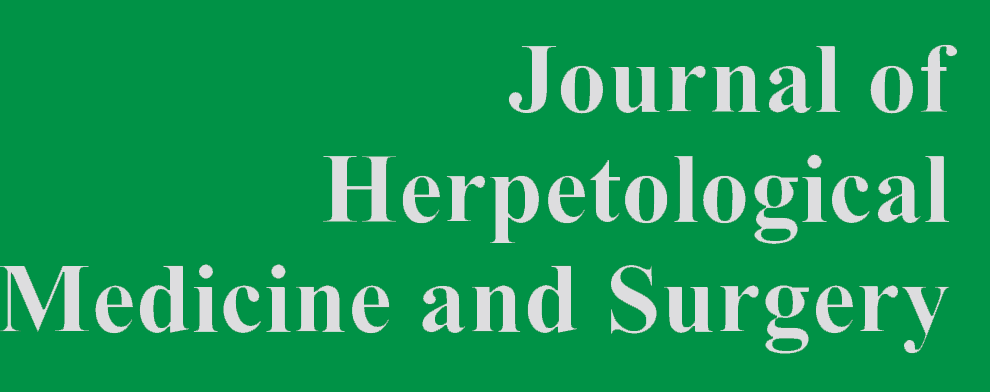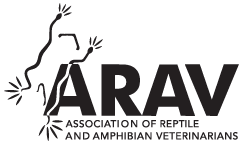Partial Glossectomy in a Blue-Tongued Skink (Tiliqua scincoides) with Lingual Squamous Cell Carcinoma
A 16-year-old, male, intact blue-tongued skink (Tiliqua scincoides) was evaluated for reluctance to eat, deviation of the tongue, and a pink mass noted in the mouth. On physical examination, a 2–3 cm long by 1 cm wide pink, well-vascularized, friable, cobblestone-textured mass was found adhered to the median raphe on the ventral aspect of the tongue. Surgical debulking was performed and biopsy samples were submitted for histopathology, which revealed a squamous cell carcinoma. Very small numbers of mixed-growth bacteria were also cultured from the sample. A complete blood count revealed toxic heterophils, monocytosis, and basophilia; however, the total white blood cell count was within reference values. A partial glossectomy was performed excising the distal 40% of the tongue, including the mass with 0.5–1 cm gross surgical margins. Histopathologically, the neoplasm was excised with narrow margins of normal tissue, leading to the concern for possible local tumor recurrence and metastasis. The patient was hospitalized for 1 wk following surgery for continued monitoring and to provide nutritional support. Two days after discharge from the hospital, the patient began eating. Weekly recheck appointments affirmed the tongue was healing without complication and the animal exhibited normal food prehension, appetite, and weight maintenance. There was no tumor recurrence 2.5 yr postsurgery. Currently, the skink is able to adequately locate and prehend food and is maintaining its weight and normal body condition following partial glossectomy.Abstract

Gross pathologic images of the lingual squamous cell carcinoma and surgical resection of tongue in a blue-tongued skink. (A) Ventral aspect of tongue with visible neoplasm at rostral one third of tongue, prior to glossectomy. (B) Ventral aspect of tongue with two 2-0 polydioxanone (PDS) stay sutures placed through distal aspect of tongue for surgical manipulation. (C) Circumferential incision made around the tongue using sharp dissection with scissors and electrocautery, approximately 1 cm proximal to the lingual mass. (D) Ligation of the lingual artery performed with 5-0 PDS suture. (E) Closure of the lingual epithelium using 5-0 PDS suture in a simple continuous pattern. (F) Completed partial glossectomy, with tongue held in forceps for visibility of incision site.

(A,B) Gross image of the resected portion of tongue removed from a blue-tongued skink. (A) Ventral aspect of tongue with the visible mass attached to the median raphe, more prominent on the right side, causing deviation of the tongue to the left when retracted into the oral cavity. The mass was irregular, cobble-stone-textured, well-vascularized and friable. (B) Dorsal aspect of tongue with two stay sutures visible at the tongue tip used to aid in surgical excision.

Histopathology of a lingual squamous cell carcinoma in a blue-tongued skink. An infiltrative, poorly delineated, unencapsulated neoplastic mass can be seen characterized by variably sized, irregularly shaped, anastomosing islands of neoplastic epithelium separated by dense fibrous stroma (desmoplasia). Individual islands of epithelium infiltrate into and are entrapped within the glossal skeletal muscle. Neoplastic tissue extends to the examined sectional margins. Entrapped myocytes often have sarcoplasmal contraction bands (feature of degeneration). H&E. × 400 magnification. Bar = 500 μ.



